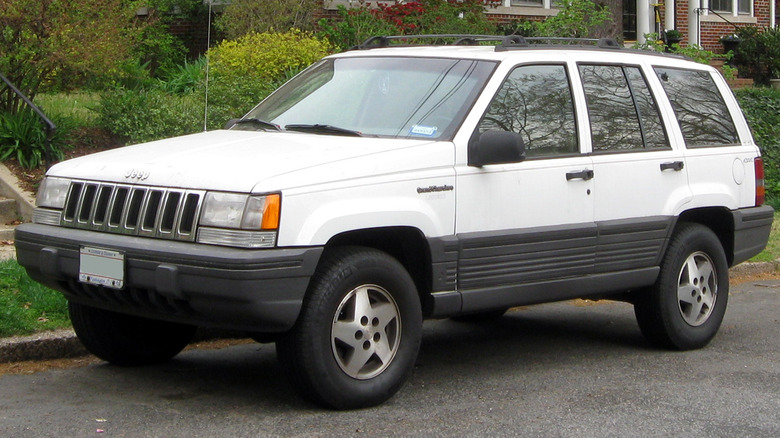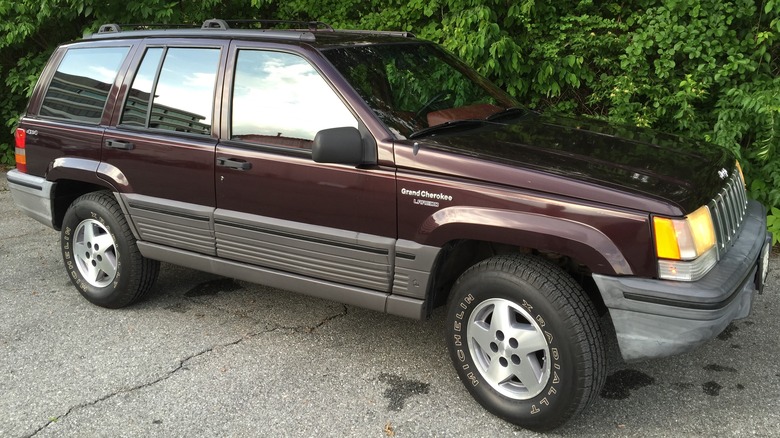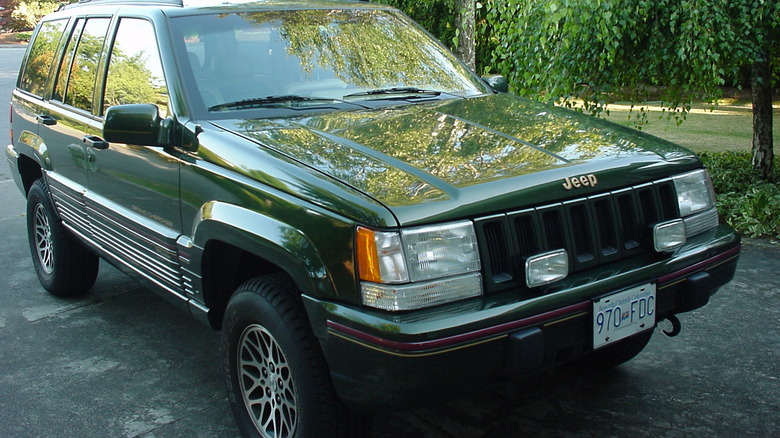The Best And Worst Years For The Jeep Grand Cherokee ZJ
The Jeep brand has been around since World War II, and has changed hands several times since Kaiser-Willys built the Quad for the US Army. Chrysler bought the badge from AMC in 1987, and introduced the first of four generations of the Wrangler that same year. Although the boxy off-roader with the removable top is the model most associated with the badge, Jeep also produced a long line of more traditionally designed SUVs.
Among those is the Grand Cherokee, which was introduced in 1993. The first generation was labeled the ZJ, distinguishing it from the XJ Cherokee and original SJ Wagoneer. It was unveiled at the 1992 North American International Auto Show in Detroit when it was driven up the stairs of the exhibition hall and through a cinema-grade plate glass window.
The ZJ was actually an AMC design that Chrysler inherited when it bought the Jeep brand. It was initially meant to replace the XJ, but only lasted six years before being replaced for the 1999 model year by the second-generation WJ Grand Cherokee. The six model years of the ZJ enjoy an overall favorable reputation for durability and performance, but the first-generation Grand Cherokee certainly has its favorable and less-desired model years.
[Featured Image by IFCAR via Wikimedia Commons | Cropped and scaled | Public domain]
1993, '94, and '98 ZJs are the best
The ZJ Grand Cherokee didn't undergo many design changes during its short lifespan, but was offered with a variety of engine and transmission options. The first two years were the only ones in which it was sold with Jeep's legendary 4.0 liter inline six-cylinder engine, which made our list of the best straight sixes in automotive history.
1993 and '94 Grand Cherokees came standard with the Aisin AX-15 five-speed manual transmission, with the AW4 four-speed automatic as an option in 1993. Both of these transmissions enjoy stellar reputations for longevity, but only the AX-15 was carried over into 1994. That year, the AW4 was swapped out for Chrysler's less reliable 44RE and 46RH automatics.
Buyers in those first two years could also opt for a 5.2 liter V8 that produced 225 horsepower to the standard I6's 190 horsepower. Those two remained the only engine options until the ZJ's swan song in 1998. That year only, Grand Cherokee Limited models could be purchased with a 5.9 liter V8 that made 245 horsepower and 345 pound-feet of torque. This edition was truly limited, with a production run of about 14,000 units. If you can't get your hands on one of these rare ZJs, stick with a 1993 or 1994 model.
[Featured image by CZmarlin via Wikimedia Commons | Cropped and scaled | Public domain]
1995 and 96 ZJs had transmission and fuel fire issues
You might be tempted by the Grand Cherokee's 1996 Motor Trend 4x4 of the Year Award, but this is one of two years of ZJ Grand Cherokee to avoid. In 1995, Jeep abandoned the bulletproof Aisin-Warner AX-15 five-speed and only offered the ZJ Grand Cherokee with the four-speed automatic. Car Complaints has logged more than 200 issues each with the transmissions on 1995 and 1996 Grand Cherokees, far more than any other year of the ZJ series.
These two model years were also the subject of 23 separate NHTSA recalls, including separate ones for a design flaw that could cause a fire in the event of a rear-end collision. An investigation of this defect revealed that resulting fires were responsible for dozens of deaths and injuries. Chrysler recalled about 2.5 million ZJ Grand Cherokees in 2013 and installed a redesigned trailer hitch mount to prevent further fires.
[Featured image by pingping via Wikimedia Commons | Cropped and scaled | CC BY-SA 2.0]


